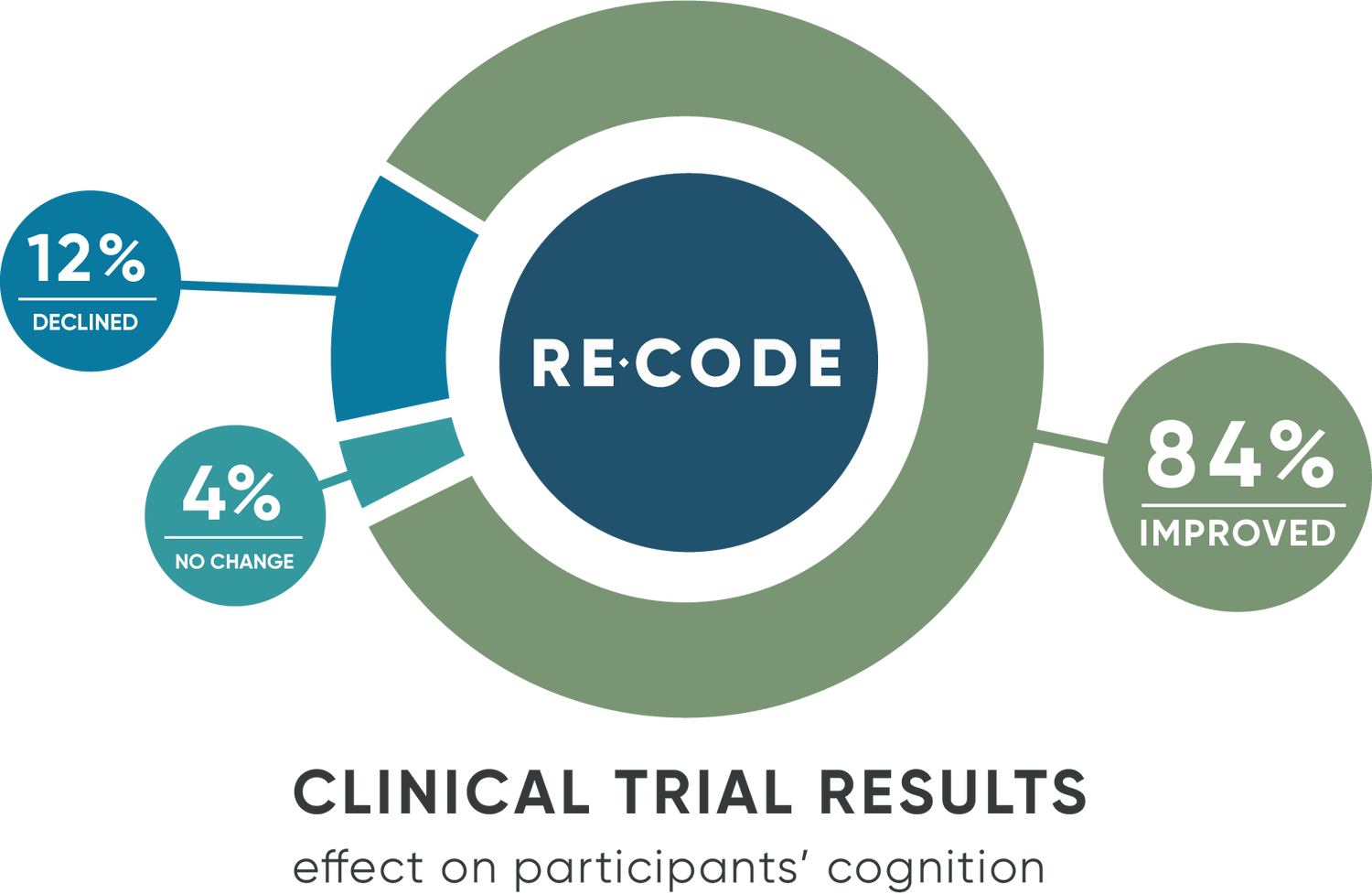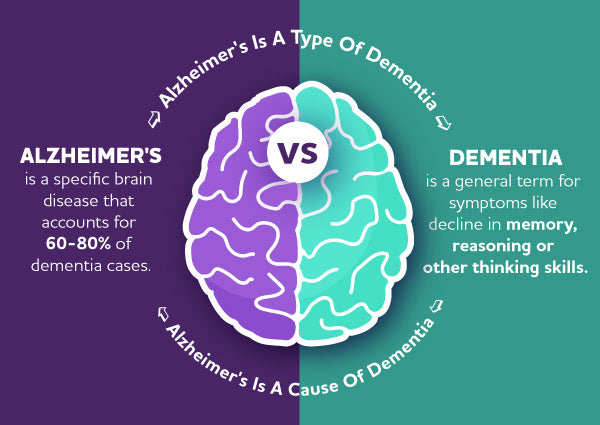Alzheimer's disease is a degenerative brain disorder that gradually destroys memory and thinking skills and affects daily life, and behavioral and psychological changes are also common. Early onset and severe cases can be devastating.
As the condition develops, patients become increasingly confused, irritated, and dependent on others for care. Eventually, they may lose the ability to communicate and recognize loved ones.
Alzheimer's disease is the most common form of dementia (which accounts for over 70% of all instances of dementia) and the second most significant underlying cause of mortality in countries like Australia.
On average, 250 Australians are diagnosed with dementia daily, which is thought to impact over 420 000 individuals there. Death rates from the condition have increased by over 70% in the last decade.
Death with dementia often occurs within eight years after the onset of symptoms, with the average person living for only four to six years post-diagnosis due to significant debilitation-related issues, including infection and starvation.
Alzheimer's Disease Has Several Potential Therapies
Alzheimer's disease currently has no cure, but treatments available can help manage some of the symptoms and improve quality of life. These treatments are typically medication-based and focus on managing the three core symptoms of Alzheimer's: memory loss, language difficulties, and changes in mood and behavior.
Treatments for Alzheimer's disease have ranged from the following and have been tried and tested on many individuals.
- Cognitive rehabilitation
- Hormone replacement therapy
- Anti-inflammatory drugs
- Antioxidant therapy
- Nutritional supplements,
But none of these treatments have been found to be effective in treating the disease or reversing its effects as of now.
Front-Line Therapy for Alzheimer's
Medical professionals often recommend Cholinesterase inhibitor medicine as a first-line treatment for newly diagnosed individuals. To some extent, the loss of cholinergic neurons can be compensated for by taking medicine from this class, which inhibits the breakdown of acetylcholine.
However, they do not seem to slow the development of disabilities and are linked to adverse gastrointestinal effects. So, finding a treatment that can improve the quality of life for patients with Alzheimer's disease is essential.
Cholinesterase inhibitor helps with symptoms such as:
- Vomiting
- Diarrhea
- Dehydration
- Weakness and
- Disturbed sleep patterns
However, it does not seem to improve the patient's condition overall; in some cases, it can worsen the symptoms.
Infrared Light Therapy for Alzheimer's: A New Hope?
Biomedical science is advancing at an alarming rate, and new discoveries are always being made. One of the most promising recent developments is the use of infrared light therapy for Alzheimer's disease. Potentially, this therapy could help improve the symptoms of Alzheimer's and potentially reverse some of the damage caused by the disease. This treatment is based on the premise that Alzheimer's disease is caused by a build-up of beta-amyloid plaques in the brain, which leads to neuronal death and the characteristic symptoms of the disease.
Infrared light therapy is a type of treatment that uses low-level waves of light to stimulate the body's cells and promote healing. This therapy has been used to treat a variety of conditions, including pain, inflammation, and tissue damage.
How Does IR light Therapy Work?
When infrared light is shone on the body, it penetrates the tissue and is absorbed by the cells. This absorption of light energy causes an increase in the cells' temperature, which in turn stimulates cell regeneration and healing.
It has been demonstrated that red light (within the range of 625 to 740 nm) and IR light (within the range of >750 nm) penetrate human skin to a substantially greater depth than other light spectra.
Photo-biomodulation
(PBM) is a process whereby tissue is exposed to low levels of red and near-infrared light, which leads to beneficial changes in the function of that tissue.
Light's capacity to modify critical biological processes at the cellular or genetic level is known as photobiomodulation, and it has been known for some time that controlled exposure to red and near-light therapy can promote wound healing and reduce inflammation.
Research conducted over the past decade suggests it may also reduce and even reverse the degree of brain cells and nerve damage resulting in profound and rapid improvement in dementia patients.
The operation of PBM: what is it, and how does it function?PBM is a therapy that typically uses a trusted source of red or near-infrared light to trigger a response in nerve cells and tissues. Research on PBM began in the 1960s when scientists first began experimenting with the then-recently developed lasers. Light therapy was mostly used for two purposes: mending wounds and relieving pain.
In recent years, light-emitting diodes (LEDs) and other kinds of artificial illumination have largely superseded low-level laser therapy. By replacing lasers with LEDs, PBM technology may be used at a fraction of the cost in consumer-level wearable devices for usage at home. As the name suggests, PBM light therapy uses low-level light to stimulate a biological response. This light will interact with the mitochondria when applied to cells and tissues.
PBM Targets MitochondriaThe mitochondria are organelles in our cells that produce energy. They are often referred to as the "powerhouses" of the cell.
Mitochondria produce the majority of the energy required by cells. The mitochondria convert this energy into adenosine tri-phosphate, which is then stored (ATP).
In photobiomodulation light therapy, photons of light enter the body and interact with mitochondria. When exposed to the correct wavelength and intensity of infrared light stimulation, ATP levels rise; thus, the dying brain cells regenerate.
This increase in ATP will lead to a cascade of beneficial effects, including:
- Increased cell proliferation (the ability of the cells to divide and make more cells)
- Improved cell function
- Increased production of antioxidants
- Decreased inflammation
PBM light therapy has been shown to be an effective treatment for a variety of conditions, including:
- Alzheimer's disease
- Parkinson's disease
- Dementia
- Traumatic brain injury
- Stroke
- Multiple sclerosis
- Depression
- Anxiety
PBM light therapy is a promising treatment for Alzheimer's disease. The mainstay of treatment for Alzheimer's disease is currently pharmacological, with the goal of slowing the progression of the disease.
PBM Therapy Using IR Helmet
The infrared light therapy Helmet is a game-changer in the medical field because of the PBM treatment it employs. The researchers speculated that delivering infrared light to the brain via a specially developed infrared light helmet would also benefit patients with moderate dementia, moderately severe dementia cases, and Alzheimer’s, known as trans-cranial photobiomodulation treatment (PBM-T).
IR Light Might Decrease Amyloid Deposits
One of the key explanations for the etiology of Alzheimer's disease is the aberrant buildup of proteins in the brain, known as amyloid deposits; studies have demonstrated that exposure to infrared light therapy reduces amyloid deposits in human neuroblastoma cells.
Near Infrared Light Impact
Near IR light therapy has shown potential in a small clinical trial, and it has shown promise in pre-clinical studies of Alzheimer's disease. It may also improve the symptoms of other mental illnesses and neurodegenerative disorders, such as dementia, stroke, amyotrophic lateral sclerosis, and traumatic brain injury.
IR Therapy Regenerates New Cells
In disorders that "converge on shared pathways of inflammation and oxidative stress," a treatment modality known as "near-infrared light therapy" may be useful. Several medical disorders, including traumatic brain injury, ischemic stroke, serious depression, and age-related macular degeneration, have shown improvement after receiving near IR light treatment.
Successful Experimental Trials
Trial 1
In 2017, in a placebo-controlled clinical trial, trans-cranial red light therapy was administered to five individuals with mild to moderate dementia for a total of 12 weeks, once per day. At the conclusion of the 12 weeks, they scored significantly higher on assessments of cognitive function and did not find any cognitive decline, such as the Standardized Mini-Mental State Examination and the Alzheimer's disease Assessment Scale. Notably, study participants who had therapy involving infrared light also reported significant improvement in functioning, sleep, less anxiety, and fewer instances of dementia. Subjects reported no unfavorable reactions.
Trial 2 (Follow-Up)
In 2019, researchers conducted a follow-up pilot study in which 8 dementia patients were randomly allocated to receive either 12 weeks of thrice-weekly near-infrared light exposure at home using a Vielight Neuro Gamma device or 12 weeks of conventional home care. By the conclusion of 12 weeks, the tests on the Alzheimer's disease Assessment Scale-Cognitive Subscale, the Neuro Psychiatry Inventory, and cerebral perfusion on MRI all showed significantly greater improvement in the four patients who had undergone near-infrared light therapy treatment. Repeatedly, there were no reports of any unwanted effects among the test subjects.
Conclusion
The infrared light therapy helmet shows a great deal of promise in the treatment of Alzheimer's disease. The mainstay of treatment for Alzheimer's disease is currently pharmacological, with the goal of slowing the progression of the disease. It has been shown to reduce amyloid deposits in human neuroblastoma cells and improve symptoms in pre-clinical studies. Additionally, near-infrared light therapy has been shown to regenerate new cells, making it a potentially useful modality for several medical disorders "converging on shared pathways of inflammation and oxidative stress."
While more research still needs to be done, this technology shows great promise in providing a long-term solution for Alzheimer's and other neurodegenerative disorders.




Leave a comment
This site is protected by hCaptcha and the hCaptcha Privacy Policy and Terms of Service apply.